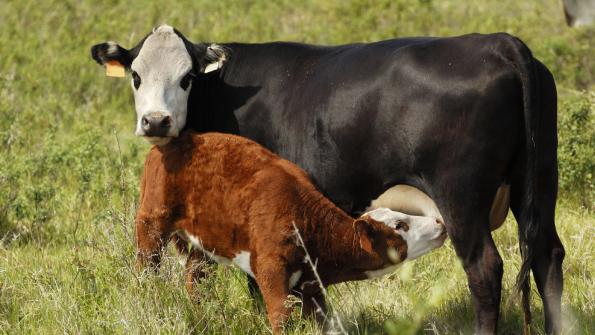Cow Longevity Important, But Affected By Many Things
While focusing on longevity is important for any commercial producer, it’s also important to focus on the many traits that cause cows to be culled early.

Longevity is one of the most economically important traits in the beef cow. It’s also one of the hardest to nail down because it’s interrelated with many other important traits. “Therefore, it’s difficult to separate the importance of longevity itself from the importance of traits that are related to longevity,” says Jim Sanders, a researcher in Texas A&M University’s Animal Science Department.
Cows leave the herd for many reasons, and what may be important to one producer may not be as critical to another. Generally, though, Sanders says, in a commercial herd, a cow should be culled when she can no longer be expected to be profitable. In that sense, then, one way to define longevity is simply a lack of problems. Here’s Sanders’ look at some of the problems that can affect longevity:
• Age of cow – In some commercial herds, all cows are culled at a certain age. (Click here to learn how to identify the age of a cow.) This is usually because experience shows cows of that age have higher odds of losing their next calf, weaning too light of a calf, dying, or being too thin to have adequate value as a cull cow. “However, there are genetic differences that affect all these factors,” Sanders says, and cows of another breed or crossbred cows may last longer under those conditions.
• Tooth wear and/or lost teeth – “Most people consider the problem with lost or badly worn teeth is that cows with bad mouths can’t graze as effectively as those with mouths in better condition,” Sanders says. “However, we’ve probably all seen cows that stayed productive after their mouths were smooth.” As we’ve learned more about gum disease in both people and animals, though, it seems likely that bad mouths may lead to problems, even if the bad mouth does not affect a cow’s ability to graze.
• Udder problems – “There are two very different types of udder problems,” Sanders says. “One is the lack of milk; the other is the inability of the calf to nurse without assistance because of pendulous udders and/or large teats.” Heavy-milking cows can have problems with pendulous udders.
“Feed conditions can also lead to udder problems,” he says. “In many cases, a cow whose calves can nurse with no difficulty in the fall or winter will have problems if she calves under lush forage conditions in the spring.”
• Eye problems – “Most of the eye problems that cause cows to leave the breeding herd are associated with cancer eye,” he says. “Cancer eye is known to be more prevalent in cows with white pigment around their eyes and there are probably genetic differences in the susceptibility to cancer eye that are independent of pigmentation.”
• Reproductive performance – It can be argued that this is the single most important economically relevant trait for commercial cowmen. “There are many different ways that reproductive performance can be evaluated and used as culling criteria,” Sanders says. “As with longevity, high fertility is largely a lack of problems.”
He says it’s difficult to genetically improve reproductive performance by selection. “But for the environment in which the cattle are raised, this program combined with selection of bulls out of old cows probably places about as much emphasis on reproductive longevity as is possible with our current state of knowledge.”
That brings us back to longevity. While longevity is affected by a lot of different traits, some of which are low in heritability, like reproductive performance, it’s still possible to affect longevity in your cowherd. “However, both accuracy and intensity of selection for longevity requires that cows be given the opportunity to express their inherent ability for this trait. Selection of young bulls out of old cows, as a continuous process, seems to be a logical approach,” Sanders says.
About the Author(s)
You May Also Like



